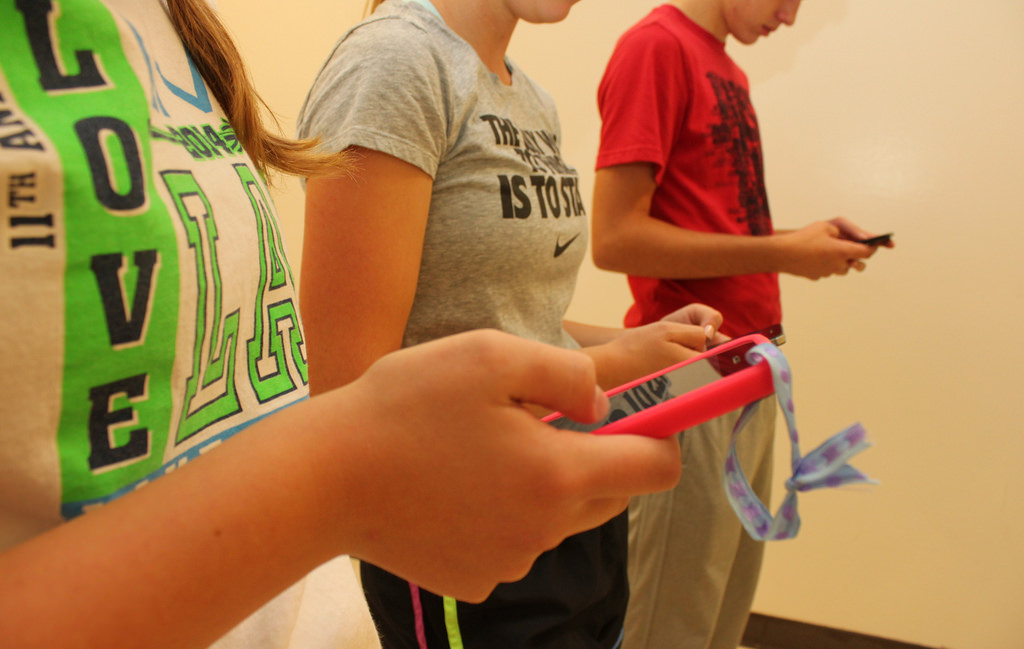In the days before cell phones and video games, kids learned social skills on the playground or on the ballfield in face-to-face interactions. Children learned all about making friends and how to deal with conflict and interpersonal conflict. Kids learned how to read and transmit subtle nonverbal signals even if they were not consciously aware of it.
Today video games trump playground games and texting is the preferred mode of communications among friends even when in the same room. As a result, nonverbal skills are drastically reduced in our tech-savvy world. It’s not that today’s kids lack the capacity to pick up on social skills and signals-it’s that they don’t have enough practice at home to hone these skills and become effective and handling face to face relationships.
This phenomenon not only affects the younger generations who grew up with technology, but it is causing all of our nonverbal skill to atrophy due to lack of use. Here are seven nonverbal skills sales persons need to be reminded of and to master if they want to succeed in face-to-face sales calls.
The Head Tilt
A head tilted either to the right or the left is a non-threatening gesture. The head tilt is a strong friends signal. People who tilt their heads when they interact with others are seen as more trustworthy.
Female salespeople are more natural head tilters. Male salespeople however, tend to communicate with their heads up a right to present themselves as more dominant. This gesture in the business world may be an advantage, however in the social context of sales the absence of head tilting could send the wrong message.
The Smile
A smile is a powerful friends signal. Smiling faces are judged to be more likable and less dominant. A smile portrays self-assurance, happiness, interest, and signals acceptance. The mere act of smiling will put people in a much more receptive mood.
According to a Psychology Today article, a smile affects brain chemistry by releasing endorphins which give us a sense of wellbeing. Moreover, smiles are contagious. When we smile at other people it is very difficult for them not to smile back. A returned smile causes the other person’s brain to release endorphins too and makes them feel good about themselves. If you make other people feel good about themselves they are more apt to like you.
The Touch
Touching is a subtle and complex form of nonverbal communication. A touch can be used to express agreement, connection, offer support, emphasize a point, get a person’s attention, guide a prospect and even reinforce power relationships.
Experiments have shown that even a light touch on the arm during the brief encounter between complete strangers has both the immediate and lasting positive effects. An exchange like: “Excuse me sir, do you know where I can find the nearest ATM machine?” accompanied by a light touch of the arm will more often produce a positive result than using words alone.
However, when touching another person, proceed with caution. Since not everyone responds the same to touches, you should look for negative reactions. Negative reactions might include pulling the arm away, increasing one’s distance, frowning, turning away, or other expressions of disapproval or unease. With the exception of the traditional handshake, touching another person’s hand is way more personal than touching his or her arm and is primarily reserved for romantic relationships.
Mirroring
Mirroring, or coping the other person body language, can be used to make friendships develop easier and faster. Mirroring creates an unconscious yet favorable impression in the mind of the other person. When you first meet someone and want to gain their friendship, make a conscious effort to mirror their body language.
The other person will not consciously notice your mirroring behavior because it falls within the human baseline and the brain considers it normal behavior. However, the absence of mirroring can be interpreted as a foe signal by the unconscious brain. The person not being mirrored may not be able to describe why they are feeling uncomfortable but this foe signal will trigger a defensive response and discourages attempts at friendship.
The Lean
People tend to lean toward individuals they like and away from people they don’t like. People that hold their heads slightly backwards to increase their distance from another person signals that the relationship building effort is not going well. The same thing applies when individuals turn their body away from another person during conversations.
The Feet
When in a public setting, such as a networking event, look at a person’s foot position to provide you with clues to their intentions. When the feet of two people engaged in a conversation are pointing directly at each other, they are signaling that they are having a private conversation and do not want unwelcome visitors. However, when their feet are askew they are open for others to join the conversation. If you decide to join a conversation, give off nonverbal friend signals as you approach. These subtle nonverbal clues can mean the difference between acceptance and rejection.
The Head Nod
One way to signal to a speaker that we are engaged with them and they should continue speaking is with a head nod. Multiple head nods convey to the speaker to increase the tempo of the speech. Multiple head nods or a single slow head nod tends to cause disruption in the speaker’s cadence and can cause a rushed response. Rapid head nodding sends a nonverbal cue to the speaker to hurry their response because the listener wants to say something or is signaling disinterest. Inappropriate rapid head nodding can be perceived as rude behavior or an attempt to dominate the conversation.
Used correctly, head nodding allows the speaker to fully express his or her thoughts and you will be perceived as a good listener and viewed in a positive light.
How can you use nonverbal signals to be more likable?









